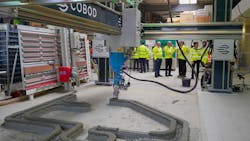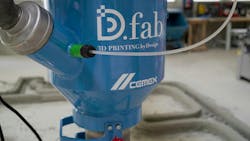The Smart Solutions to Cut Construction Workplace Accidents in Half
By: Cemex
Each year, more than 1,000 workers lose their lives to construction accidents, and this figure is only increasing.
The most common construction injuries include falls, electrocutions, struck-by accidents, and incidents of being caught in or between something. These statistics highlight the urgent need for better prevention and new technologies to help companies reduce risks. Efforts in this direction are already underway, thanks to advancements such as AI-driven monitoring systems, building information modeling (BIM), and robotics, but there is still a rapidly increasing need for new solutions to improve workplace safety by 2030.
To resolve this crucial issue, the industry must overcome several key challenges, including resistance to technological change, securing the necessary investment for widespread adoption, and ensuring proper integration with existing processes.
How can technology improve construction safety?
Technology is changing the face of the construction industry, and the quickest areas in which improvements can be seen are health and safety. Construction sites can be unstable environments with risks ranging from falls and equipment accidents to exposure to harmful materials. Advances in technology are tackling these safety issues through a range of innovations, including wearable smart devices, automated machinery, and 3D modeling software that allows for detailed planning and risk assessment.
The challenge now is ensuring their widespread adoption. Gaining enough stakeholders to adopt these technologies at scale will take time, not to mention significant investments. The key is to keep demonstrating the benefits of new startup solutions to attract more attention and, eventually, wide scale adoption.
In the past few years, there have been a plethora of innovative technologies developed that aim to improve worker safety. These advancements are reshaping how safety is managed on-site and are proving instrumental in reducing accidents.
For instance, wearable smart devices, such as helmets with built-in sensors and smart vests, are becoming more common on construction sites. These devices monitor workers’ health, detect falls, and send real-time alerts to supervisors about potential safety issues. There has also been significant progress in automated machinery and robotics—which can handle repetitive, arduous, or perilous tasks—reducing the need for workers to operate in such conditions.
One example of a machine-assisted technology is 3D construction printing. COBOD, for example, has engineered multifunctional construction robots that are capable of using conventional concrete in the construction of single- and multistory buildings.

